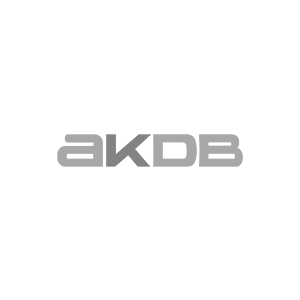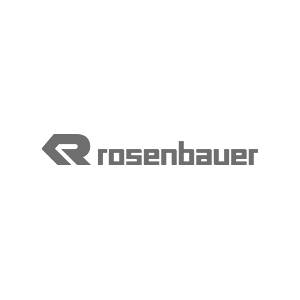Als eine der führenden Naming- und Brandingagenturen für Industriekommunikation bilden wir mit unserem Branding Powerhouse die komplette Branding-Wertschöpfungskette international ab. Für mehr Leistungsfähigkeit, Effizienz und Kreativität. Unser Ziel: Absolute Kundenzufriedenheit.
Branding Powerhouse für globale Markenstrategien
Die INCREON Agency Group deckt als „Branding Powerhouse“ die gesamte Branding-Wertschöpfungskette für international agierende Industrie- und Technologieunternehmen ab. Tiefes Technologie-, Prozess- und Vertriebsverständnis zeichnen uns aus. Wir verbinden umfassende Erfahrung mit Beratung, Kreativität und Leistungsfähigkeit für nachhaltige B2B-Markenkommunikation. Das schätzen unsere Kunden aus Industrie, (Hoch-)Technologie und B2B, die mehrheitlich als Hidden Champions, Familienunternehmen, größere KMUs oder Corporates in internationalen Märkten agieren.
Entdecken Sie mit uns eine neue Dimension der Branding-Exzellenz. Von der Strategie bis zur Umsetzung sind wir in der INCREON Agency Group Ihr Partner, wenn es darum geht, Werte und Erfolge für Marken, Märkte und Geschäftsentwicklungen zu schaffen.
Unsere Kunden
Im deutschsprachigen Raum, in Europa, China und weltweit liegt unser Fokus in Aufbau und Entwicklung starker B2B-Marken. Das machen wir mit Herz und Verstand, mit Kreativität und beiden Beinen auf dem Boden. Das ist unser Ansatz, um erstklassige Leistungen in Naming, Branding und B2B-Marketingkommunikation zu erzielen. Unsere Stärke liegt in einem tiefen Verständnis für Technologie, Prozesse und Vertrieb. Und darin, dass wir Branding als nachhaltiges Instrument nutzen, damit Unternehmen in wettbewerbsintensiven Märkten bestehen und wachsen. Wir sind das starke Branding Powerhouse für unsere Kunden.
Unsere Standorte

München

Shanghai

Mallorca
Mit unserer Agentur in München sind wir für Kunden aus dem deutschsprachigen Raum und Europa jederzeit gut zu erreichen. In unserer Agentur in der Boomtown Shanghai verbinden wir deutschen Qualitätsanspruch mit lokalem Marktverständnis. Und warum gibt es einen Standort auf Mallorca? Weil wir dort Spaß an der Immobilienentwicklung haben.
Unsere Philosphie
Mit Leidenschaft und authentischem Branding holen wir Technologie- und Industrieunternehmen auf die internationale Bühne und machen sie erfolgreicher.
In der INCREON Agency Group sind wir fasziniert von Technologie und Industrieprodukten, essenziellen Bestandteilen komplexer Fertigungsprozesse und vielfältiger Endprodukte. Unsere Mission ist es, durch authentisches Branding und inspirierendes B2B-Marketing Märkte und Menschen für die Unternehmen unserer Kunden und für ihre Produkte zu begeistern. Als weltweiter Sparringspartner auf Augenhöhe bieten wir ganzheitliche Beratung, Strategie, Konzept, Design und Umsetzung in klassischer, digitaler und virtueller Kommunikation. Unser Ziel: nachhaltigen Erfolg für unsere Kunden in Technologie und Industrie zu schaffen.
Willkommen in unseren Kreativräumen
In unseren großzügigen Räumen, die mehr an gemütliche Wohnzimmer erinnern als an klassische Büros, steht Wohlfühlen an vorderer Stelle. Große Fenster durchfluten die Räume mit Tageslicht, schaffen eine luftige Atmosphäre und sorgen für eine positive Arbeitsumgebung.
Wir setzen auf persönlichen Freiraum: Nie mehr als vier Personen teilen sich ein großes Zimmer, wodurch jeder individuellen Raum zum Denken und Arbeiten hat. Unsere Arbeitsplätze sind mit State-of-the-Art-Technik ausgestattet, um ein reibungsloses und effizientes Arbeiten zu ermöglichen.
Für gemeinsame Pausen und kreative Zusammenkünfte stehen großzügige Flächen zur Verfügung. Hier lassen sich Ideen austauschen und Projekte vorantreiben. Gleichzeitig bieten wir Rückzugsbereiche für konzentriertes Arbeiten, um jedem Mitarbeiter die optimale Umgebung für produktive Kreativität zu bieten. Bei uns fühlt sich Arbeit wie Zuhause an – inspirierend, komfortabel und produktiv.
Ideenreich. Umsetzungsstark. Konsequent.
INCREON bedeutet Inspiring – Creativity – On Track. Gegründet im Jahr 2000, sind wir heute ein starkes Team, das Ideenreichtum, Umsetzungsstärke und Konsequenz vereint. Unsere Expertise erstreckt sich über den B2B-Markenaufbau und den Markenausbau mit Services wie Naming, Branding und Brandmanagement sowie Markenkommunikation durch klassische und digitale Marketingstrategien. Mit einem spezialisierten Digital-Team, eigenen Studios für Foto, Video und Animation sowie einer eigenen 3D-Agentur für Virtualisierung und Visualisierung.
Suchen Sie professionelle Unterstützung für konsequente Markenentwicklung, den systematischen Aufbau fester Kundenbeziehungen und aktives Verkaufen durch eine nachhaltige B2B-Marke? Das ist genau unser Metier! Unser Credo heißt: „Develop Brands. Create Markets. Generate Business.“ Was für uns einst eine Idee war, ist heute unsere Erfolgsstrategie. Durch die einzigartige Verknüpfung von Marketing, Markenführung, Kreation und modernster Technologie entwickeln wir effektive Kommunikationslösungen, die Ihnen Qualitäts-, Kosten- und Zeitvorteile verschaffen.
Bereit für eine neue Ära kreativer Exzellenz und nachhaltiger Erfolge? Klicken Sie auf die nebenstehenden Links und entdecken Sie, wie die INCREON Agency Group Ihre Visionen zum Leben erweckt.
Agentur
Mission/Vision, Referenzen, Karriere, Zahlen und Fakten, Management, Standorte
Namensfindung · Naming Agentur
B2B Naming, Analyse, Strategie, Namenskreation, Markenschutz
Markenberatung · Branding Agentur
B2B Branding, Analyse, Strategie, Markenidentität, Positionierung, Brand Elements, Markenerlebnis, Employer Branding, Markenperformance, Marketing Beratung
Brand Design
Corporate Identity, Corporate Design, Video Branding, Audio Branding, Marketingkommunikation, Implementierung/Training
INCREON Digital · Digitalagentur
Strategie, Online Marketing, Digital Design, Entwicklung
INCREON Studios
Video, Foto, Audio
INVIZCOM · 3D CGI XR
Interactive 3D, 3D Visualisierung, CGI/AR/VR
Jobs im Branding Powerhouse
Naming
INCREON ist die B2B-Namensagentur für Namensstrategie und Namensfindung in globalen B2B-Märkten. Darauf haben wir uns spezialisiert.
Brand Consulting
Unser Ziel als Experten im Bereich Branding ist es, robuste B2B Marken zu kreieren, die langfristige Beziehungen etablieren und nachhaltige Erträge für unsere Kunden generieren.
Brand Design
Als führende B2B Branding Agentur positionieren wir durch ein wiedererkennbares Brand Design die Marken unserer Kunden an erster Stelle im Gedächtnis ihrer Kunden.
Digital
INCREON DIGITAL ist eine B2B-Digitalagentur mit umfassenden Services in Digitalstrategie, Online Marketing, Digital Design und Webentwicklung.
Studios
Die Foto- und Video-Produktionen in den INCREON Studios bieten visuelle Lösungen für Industrie und Technologie und stellen die Marke in den Mittelpunkt.
3D CGI XR
Als Experten für 3D-Visualisierung und CGI bieten wir umfassende Lösungen für interaktive virtuelle Realität und erwecken Produkte, Maschinen, Anlagen und Architektur zum Leben.

INCREON ist
IHR BRANDING POWERHOUSE
Inspiring Creativity On Track
















































